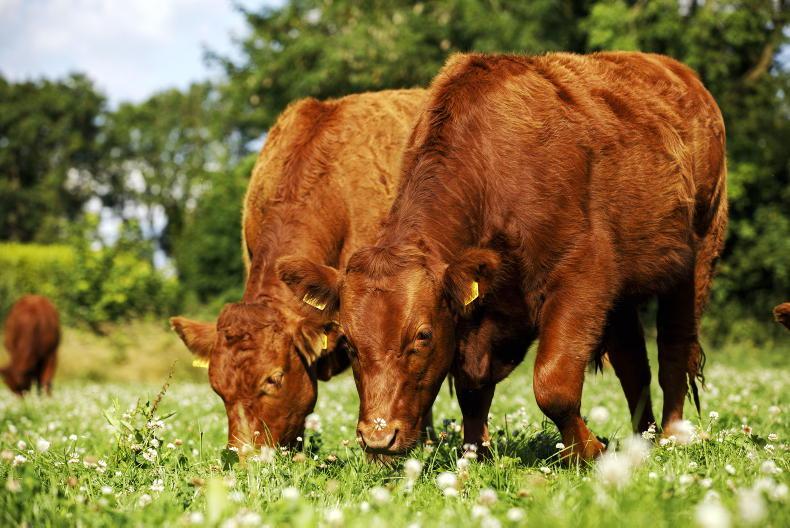The latest Animal Identification and Movement (AIM) herd profile analysis for 1 June 2022 shows 25,150 more beef cattle on farms compared to 1 June 2021.
The data published by the Department of Agriculture shows there were 13,130 more beef males on farms on 1 June 2022, 6,097 beef heifers and 5,923 extra dairy males.
The higher number of cattle in this age bracket tallies with Bord Bia forecasts of the beef kill increasing by in the region of 100,000 extra cattle in 2022.
The beef kill to date is running almost 89,000 head higher, with this figure including in excess of 33,000 more cows slaughtered.
As detailed in Figure 1, there is a significant swing compared to cattle numbers in the 18 to 24 month age bracket, which were 9,143 lower year-on-year.
The figure of 23,519 dairy males is underpinning an increase of 14,915 head in the 12 to 18 month age bracket, with negligible difference in the six to 12 month age bracket.
A 28,792 head, or 21.4%, increase in live calf exports is reflected in numbers in the zero-to-three month and three-to-six month age bracket falling by 13,884 and 23,112 head, respectively.
This is driven mainly by almost 17,000 fewer dairy males despite the number of calves born to a dairy sire in 2022 increasing by over 30,000 head.
Cow numbers
Tables 1 and 2 gives a detailed breakdown of bovine numbers across all categories of stock and the change in numbers compared to 1 June 2021. Suckler cow numbers are running 25,304 head lower, with this reduction following a similar downward trend in recent years.
In contrast, growth in the dairy herd continues, with cow numbers on 1 June increasing by 21,817 head and recorded at 1.64m head.
There were also 48,436 more dairy heifers on farms, reflecting continued expansion plans and also increased use of sexed semen in the last two years.
The total number of bovines on farms was recorded at 7.4m head. This has remained relatively static with the increase in dairy numbers offset by suckler numbers falling on an annual basis.






 This is a subscriber-only article
This is a subscriber-only article










SHARING OPTIONS: